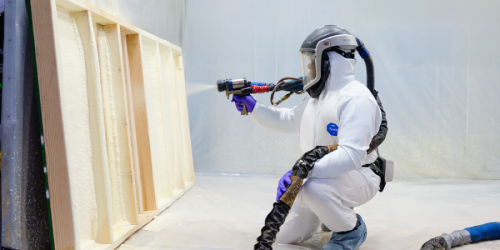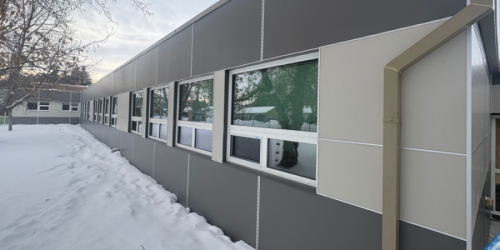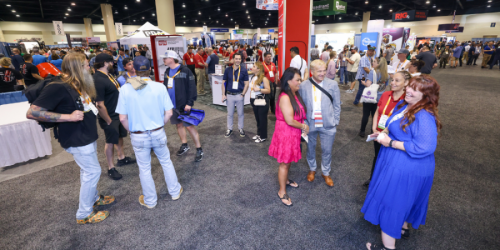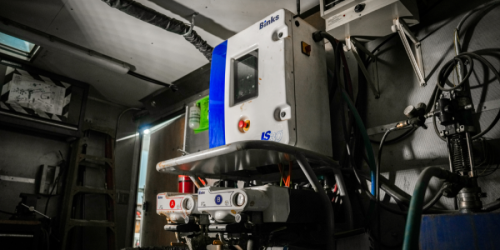Q&A Forums
Welcome to the fun Post New Topic | Post Reply
| Author | Comments |
|---|---|
|
mason
Posted: Jul 26, 2010 02:48 PM
|
Welcome to the fun
Welcome to the forum. Sit back and relax for a few minutes. I expect you will be busy soon.Cue, Jim Cooler, foamdude |
|
Posted: Jul 29, 2010 05:37 PM
|
Thanks! I see that you have been heavily involved in discussions on these subjects, so you have already been immersed in the "fun". I look forward to some lively discussions. Mike Kiser |
|
Posted: Jul 30, 2010 07:28 AM
|
mike,,, what construction materials are allowed as interior cladding for 15 thermal barrier performance,,,no foam in wall,,, what materials other than 1/2 gypsum board are allowed exposed in habitable space? dude |
|
Posted: Jul 30, 2010 06:33 PM
|
Dude, Thanks for being the first inquiry! And you picked a good one that will lead to a lot of "connected" issues. But first I need a little clarification before entering into a discussion about this. There is no code requirement (IRC, IBC, IFC) for a 15 minute Thermal Barrier if there is no plastic material involved in the wall. Is there any "other" flammable or combustible material in the wall? Better yet, to start building a very clear picture for the discussion, what is the construction of the wall you want to duscuss? Mike |
|
Posted: Jul 31, 2010 06:49 PM
|
uh,,, 2x6 stick framed osb exterior sheathing,, you know,,a sidewall in a house,,, lets consider,,no foam,,,no filterglass,, romex and boxes,,,maybe a plumbing run or two... you know mike,,a wall in a house,,, so... what materials other than 1/2" gypsum board will give the 15 thermal barrier cladding required here anyway??? |
|
mason
Posted: Aug 02, 2010 09:55 AM
|
foamdude, interior finishes according to 2009 IRC section 302.9 Flame spread index for wall and ceiling finishes: Wall and ceilings finishes shall have a flame spread index of not greater than 200 Smoke Developed index; Wall and ceiling finishes shall have a smoke-developed index or not greater than 450. (using ASTM E 84 or UL 723). If you install insulation (non foam plastic), in section 302.10 it states. Insulation materials including facings such as vapor retarders, and vaper permeable membranes installed within floor-ceiling assemblies, roof ceiling assemblies, crawl spaces and attics shall have a flame spread index not to exceed 25 with an accompanying smoke-developed index not to exceed 450 when tested in accordance with ASTM E -84 or UL 723. |
|
jimcoler
I have over 10 years of experience specifying and installing open and closed cell spray foam. I've sold my business but I'm still selling for the new owners and consulting on large and custom specific jobs. I've expanded my knowledge into t Posted: Aug 02, 2010 03:35 PM
|
Hi Mason, Jus for your information, it's Jim Coler. That's one o and sounds like "Coal-er". I'm in uganda on a missions trip until next week and then I expect to be busy catching up on all of the missed work. So, I' not sure I have the time to spend spinning our wheels on this again. Besides, it sounds like Mike is starting with less knowledge than all or most of us with his latest comments on this site. Thanks, Jim |
|
Posted: Aug 03, 2010 12:56 AM
|
Foamdude, First of all, many thanks to Mason for his "on point" response. He has made my job a step easier here. It is true that, as I alluded to in my first response, there is no actual code requirement for a thermal barrier on a wood framed wall, unless there is a plastic material (or special consideration for some other combustible material) within the wall system. As Mason’s reply shows, there are only “Flame Spread” classifications that are required, depending on the class / type of building. Since I always try my best to keep things very clear (as much as possible), I asked for the "theoretical wall" design because I thought there was some specific job you had in mind that was behind the question. Once I saw the answer, I realized, of course, that you were not discussing a specific job, but an idea. I took time this weekend to look through all the strings in the Q&A forums that seemed likely to have related subjects, and I read “foamdude” entries (as many as I could find) that dealt with codes and thermal and/or ignition barriers. I found this “question” has been repeated by you on a number of occasions, seemingly without receiving the answer you seek. I am going to get to answering it, but, first I feel I need to put some of the background here (on THIS Q&A string) for those who might read this, but who have not read your past discussions on the subject. I also need to discuss some technical background issues that set the stage for a final answer to your “question”. I happen to agree with a lot of what you say in those past discussions regarding the codes. They are often too complicated and written with what seems like way too much “legaleze”, a lot like the IRS. (won’t say what I think of THEIR codes!) I also understand your frustration, seeing that in Canada the codes actually identify other materials that can be used as Thermal Barriers in place of ½” Gypsum, yet here in the U.S., our codes do not. Why? I can’t answer that. I didn’t write them. If I HAD, I personally would have “listed” them too, because it adds “clarity” to the subject by giving examples, and gives specific directions for contractors. I used to be a Construction Contractor (20 years in commercial roofing & remodeling), so I understand first-hand the frustration of dealing with codes, always wishing they would just “talk English”. As I said, I didn’t write the codes, nor can I change them, but what I CAN do is work with what we’ve got, and try to help make it as painless as possible to get a good handle on what we all need to know in order to go about our businesses with the confidence that we are doing the right thing. What I have done over the years is study the codes, argue them, and work to change them if they can be made "clearer". I also try to find out WHY they are as they are. What I learned about the Thermal Barrier issues is very interesting, and I see how and why there is so much confusion on the subject. It is partly because, out of necessity, the codes organizations are so involved administrating the flow of information in the process of writing, modifying, and re-writing the codes, there is little time for explaining what exactly led us to this point with any given code document. I know, long winded, but my point is… the answers that can remove the confusion lie in a couple of “core” issues that have become hugely misunderstood, misinterpreted, and ultimately, misrepresented by many in the FR industry (my Industry I’m afraid), which is now heavily interfacing with the SPUF industry, pretty much for the first time in a very big way. Why? I think we all know the answer to that… because Thermal Barriers and Ignition Barriers presented a huge potential for growth for Fire Retardant companies. First came emphasis on the codes, then came the FR Industry. Hello. Yea, our Company is one of them. I state it clearly, and make no bones about it. BUT, I don’t think it helps anyone in either Industry, FR or SPUF, if we don’t get this absolutely right. This is life-safety issues on the one hand, and it is enforceable regulations on the other. For the sake of all concerned, and for prolonged growth in BOTH industries, this needs to be correct early, rather than late. I’ve seen “late” in FR, and it is a very bad thing. So, enough doom and gloom. How about some answers? I did say in my opening response to you, Dude, that your question would lead to a lot of “connected issues”, but once I read all your previous discussions, I realized it was even more true than I at first thought. What you are asking may “seem” to some to be a confusing question, but, in my view, it cuts right to the HEART of the matter. I will have to do this in a couple of installments so please bear with me, because I am going to have to take a little trip around the proverbial block on this subject, but it will be worth it, and I think the discussion will help all who read this to understand the issues surrounding Thermal Barriers and Ignition Barriers much more clearly. Everyone should be able to address the issues with confidence. It is my goal for every Contractor to know for certain how to identify Thermal Barriers, qualified equivalents, as well as Thermal Barrier “alternatives” for themselves. (After all, Foamdude, as you so astutely pointed out, OUR codes don’t identify them for us, so we NEED to be able to do this on our own... and to KNOW what is correct.) I will leave this letter with a “teaser” as to where I am going in part two… The subject that gets many people going in circles, including fire officials, is the subject of ASTM E119 (firewall testing), yet it is essentially the FOUNDATION upon which the Thermal Barrier codes were built. Just like in any building, if the foundation is off, everything that is built on it will be too. That is what has happened to the public impression of Thermal Barriers. The “impressions” of E119 as it relates to Thermal Barriers is a bit off, so the “impressions” of Thermal Barriers are off too. More in Part Two... Mike Kiser |
|
mason
Posted: Aug 03, 2010 07:58 AM
|
Sorry Jim, it looked funny to me when I wrote it, but I should have double checked the spelling before posting. Blame it on brain damage from too many posts. Mike, I like your start, looking forward to installment 2. |
|
Posted: Aug 03, 2010 12:51 PM
|
EVERYONE: I am locking this thread. I transfered everything to a new thread with a topic name that fits the subject. See: Thermal Barrier codes - clarifying the "perceptions" Mike Kiser |





























